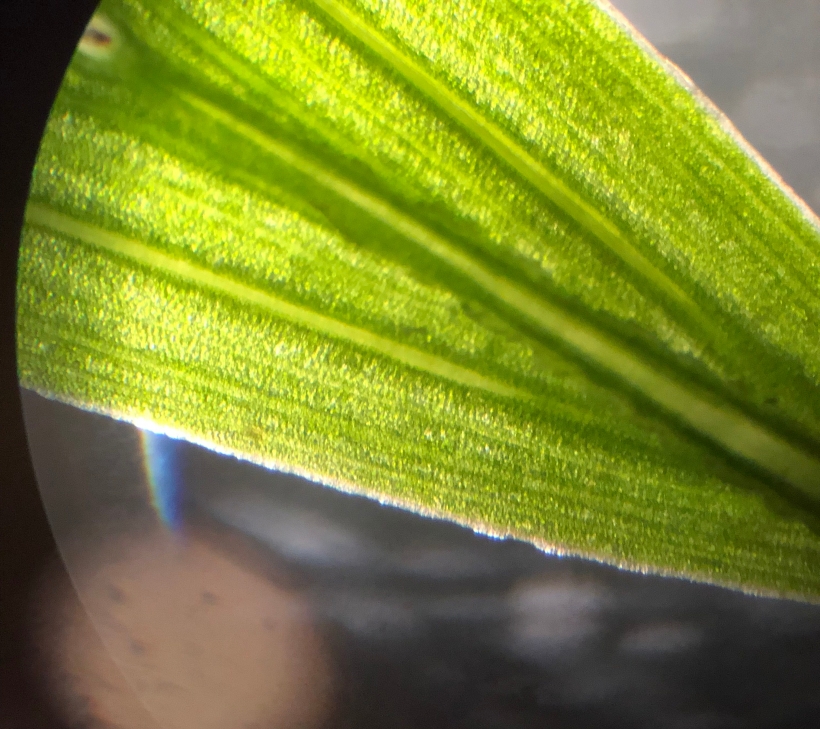This week, I’ve made progress that made me very content with my findings. I’ve been studying the leaves that I’ve collected from my plants under a microscope. This is a continuation of the project I’ve been working on involving I cut up small samples of the philodendron and the parlor palm and set up a few slides. The purpose of this was to see if I could correlate the structure of the leaves to the function of the plant. I wanted to know if plants that have bigger leaves are more efficient at circulating the air. I began with the parlor palm leaves. As you can see from the photo I’ve inserted below, the plant is very leafy and the leaves are generally pretty small. When looking at the leaves under a microscope, I noticed it had small veins running through it. They looked almost like natural fibers you may see in banana peels and in grasses. I still do not know what the purpose of these fibers is, but I will do more research into it.
The parlor palm was generally less effective than the other plants I had tested. Although it was able to produce more oxygen, the data showed that it didn’t remove any CO2 from the air. The philodendron was more successful as it was able to remove CO2 and create oxygen.

The second leaf I put under a microscope was a clipping of a philodendron. This plant is often referred to as a money tree and is frequently placed in offices and classrooms because of it’s ability to provide fresh air. So far, I have not done enough to research to come to a conclusion yet.



